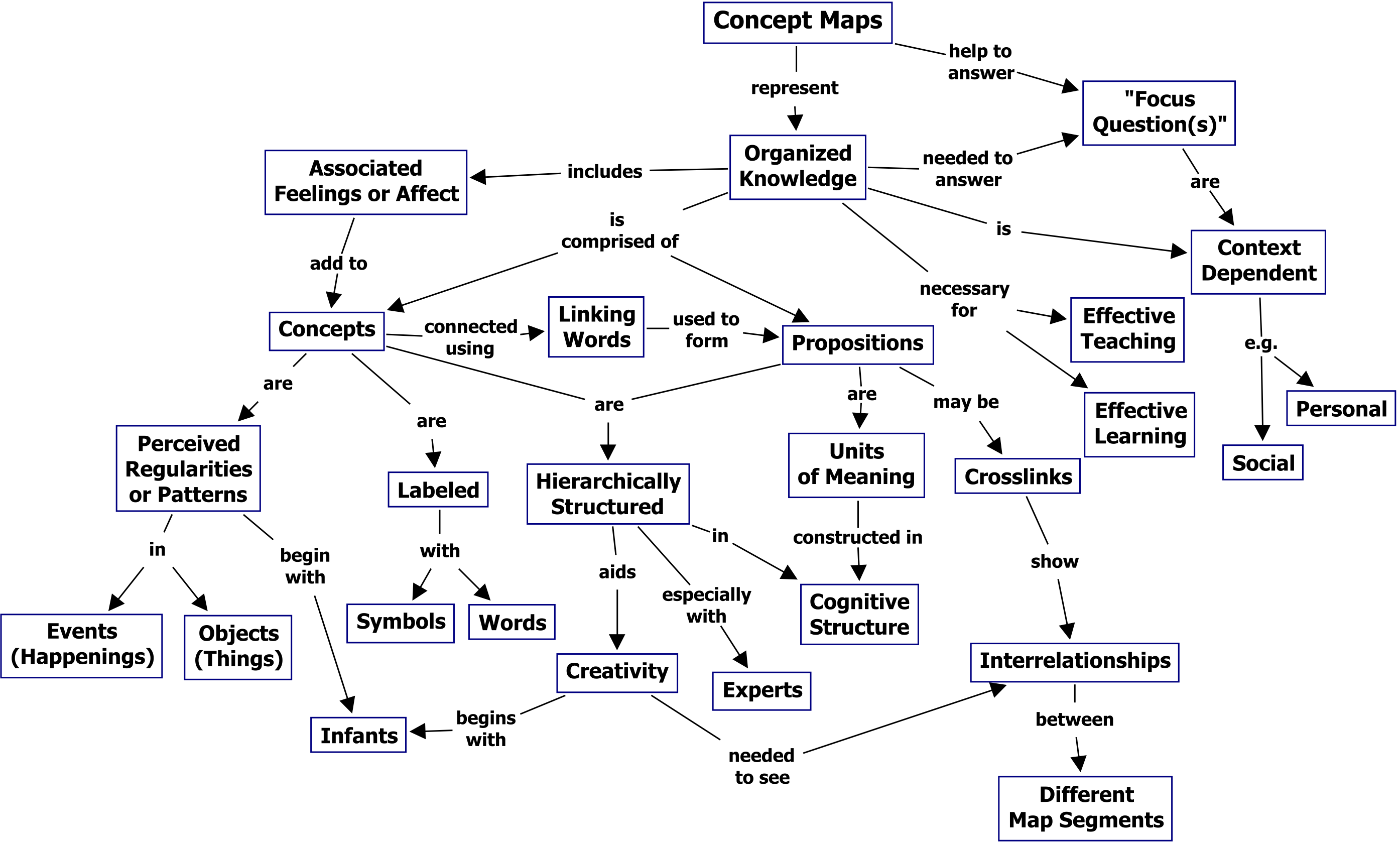What
Concept Mapping is a tool for collaborative Sensemaking. It is based on constructivist learning theories and uses visual and haptic representations of Concepts to facilitate the exploration of Concept Networks. It produces abstract, map-like Models of Complex Systems that show conceptual and causal relationships between components and properties of the system.

Why
- Document, structure, and acquire domain Knowledge
- Build a shared Explicit Model of a complex system
- Spell out and critique conceptual frames and mental models
How
- Number of participants: 4–16
- Time needed: 30–90 mins
- Material:
- Sticky notes in different colours
- Thick black markers
- Large writeable boards (one per 4 participants)
- Timer
With a group of people familiar with the System to describe and understand (e.g. a team, colleagues, customers):
- Collect concepts
- Everyone for themselves
- In a fixed time box (e.g. 3 mins)
- On Post-It notes
- Using colour coding to denote categories (e.g. people, objects, places, events, beliefs, emotions)
- Write down concepts relevant for describing the target system, one concept per note
- Consolidate and prioritise concepts
- In pairs, then groups of 4
- In fixed time boxes (e.g. 3+3 mins)
- Collect notes and sort them into categories
- Remove duplicates and merge equivalent concepts
- Order notes in each category according to importance
- Map concepts
- In the established groups of 4
- In a fixed time box (e.g. 15 mins)
- Put notes on a board, going from important to less important
- In the process, arrange and re-arrange notes according to the relationships between the denoted concepts
- Describe and visualise these relationships on fresh notes in a neutral color, using simple verbs
- Once the emerging network stabilises, draw labeled lines between the concept notes, replacing the relationship notes
- Visualise boundaries and cross-links between domains of the map
- Present and discuss maps
- Going from group to group
- In fixed time boxes (e.g. 2+2 mins each)
- Present maps (without interrupting)
- Ask and answer questions
- Mark uncertainties, disagreements, possible additions in the maps
- Merge and consolidate maps
- With all participants
- Agree on a map to use as the basis for a consolidated version
- Go through all annotations and amend the map accordingly
- Add relevant notes from the other maps, rearranging notes and adding connections, boundaries and cross-links as necessary
- Check the consolidated version for consistency and completeness
Concept Mapping documents all contributions and works bottom-up from individual insights to collective understanding, so that every perspective is being represented and taken into consideration.
Externalising and socialising the individual insights creates a process of Distributed Cognition and is an example for how Facilitation helps meaning emerge in social groups.
Concept Mapping can be a practical tool for the exploratory parts of Conceptual Engineering and design processes.
Where
- Can process output of: Problem Statement, “How Might We?” Questions, Why-How Laddering
- Can feed input to: “How Might We?” Questions, Why-How Laddering, Design Studio, Kano Model
Caveat
Like all bottom-up approaches to modelling complex systems, Concept
Mapping has an inherent limitation: due to the systems’ complexity,
the resulting maps will always incomplete or strictly wrong.Cilliers (2001), 137–138
With this in mind, the emphasis should not be on these results, but on the process of mapping and the insights, shared understanding and synchronisation of individual Explicit Models it generates. It is thus best understood as a Heuristic Device.
Provenance
Concept mapping was developed by Joseph D. Novak at Cornell University in the 1970s as a means of representing the emerging science knowledge of students. It has since been used in science learning, expert knowledge representation and, more recently, the Sensemaking parts of design processes.
Concept mapping is based on constructivist theories of learning and
knowledge, particularly the cognitive theories of David Ausubel, from
whom Novak adopted the position that “in meaningful learning, new
knowledge is subsumed by already existing cognitive structure
elements.”Novak & Gowin (1984), 162
References
- Cilliers (2001), Boundaries, Hierarchies and Networks in Complex Systems
- Novak & Cañas (2008): The Theory Underlying Concept Maps and How to Construct and Use Them
- Novak & Gowin (1984): Learning How to Learn
- Wikipedia: “Concept map”